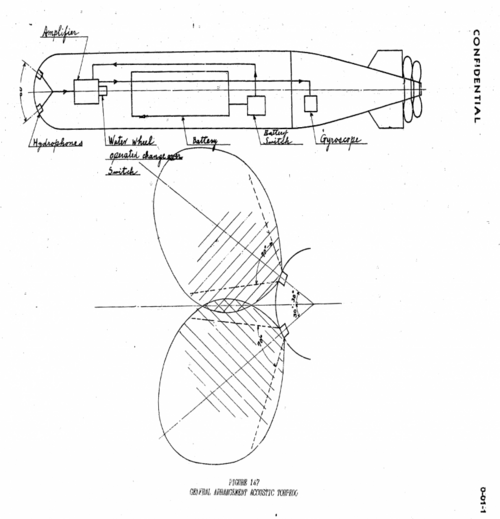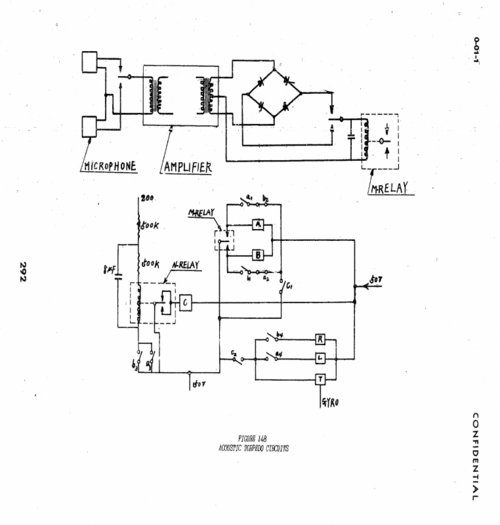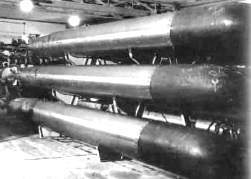Dilandu
I'm dissatisfied, which means, I exist.
The major problem of the famous Type 93 "Long-Lance" torpedo was, that it wasn't exactly very effective in its intended role as long range weapon. The hit probability on extreme distances was just too low, and unless the target was unaware about the possibility of long-range attack, it was almost impossible to achieve a hit. The direction wander of Type 93 on max range was about 1500 meters, right or left, after all.
So my idea: let's give Type 93 some homing capability.
By reducing the oxygen supply tank (as it was done on late-war Type 93 Mod 3 torpedo) and fuel vessel, we could free about a meter of torpedo's lenght, while still having 30 km max range on 36-38 knots. The space therefore freed, we could use to install (behind the standard engine section) the electric motor and reduced battery from Type 92 electric torpedo. The electric motor is installed on the shaft of the torpedo propeller. The idea is, to give Type 93 "Long-Lance" the ability to run silently on electric for 2-3 km.
In the head section of Type 93 torpedo, we would install the pair of hydrophones, amplifying circuit and differential relay from the experimental Type 1 acoustic torpedo (based on Type 92, tested in 1943-1944). The control system would be linked with Type 93 gyro, thus allowing to guide the torpedo toward the source of engine noise (enemy ship).


The concept of operation: the modified Type 93 is launched from the standard torpedo tube at long distance. The torpedo made 30 km run on 36-38 knots, using oxygen-kerosen powerplant. At pre-determined momen, the timer would swithc off the piston engine, and power up the electric motor and acoustic homing system. At reduced speed, the "homing Long Lance" would be able to went 2-3 km silently enough for the homing system to actually guide it toward the enemy ship.
So my idea: let's give Type 93 some homing capability.
By reducing the oxygen supply tank (as it was done on late-war Type 93 Mod 3 torpedo) and fuel vessel, we could free about a meter of torpedo's lenght, while still having 30 km max range on 36-38 knots. The space therefore freed, we could use to install (behind the standard engine section) the electric motor and reduced battery from Type 92 electric torpedo. The electric motor is installed on the shaft of the torpedo propeller. The idea is, to give Type 93 "Long-Lance" the ability to run silently on electric for 2-3 km.
In the head section of Type 93 torpedo, we would install the pair of hydrophones, amplifying circuit and differential relay from the experimental Type 1 acoustic torpedo (based on Type 92, tested in 1943-1944). The control system would be linked with Type 93 gyro, thus allowing to guide the torpedo toward the source of engine noise (enemy ship).


The concept of operation: the modified Type 93 is launched from the standard torpedo tube at long distance. The torpedo made 30 km run on 36-38 knots, using oxygen-kerosen powerplant. At pre-determined momen, the timer would swithc off the piston engine, and power up the electric motor and acoustic homing system. At reduced speed, the "homing Long Lance" would be able to went 2-3 km silently enough for the homing system to actually guide it toward the enemy ship.

